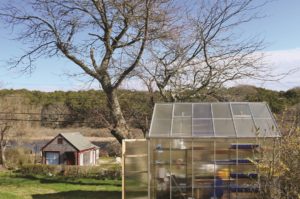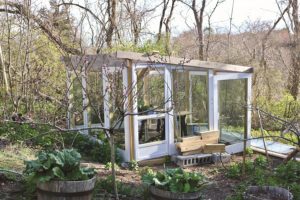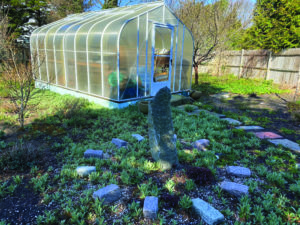We often think of our gardens as a collection of plants. They are leaves, stems, forms, and flowers, all interacting with the wind, rain, and sun. They are colors and smells, habitats and spaces, relating to the birds and insects and to ourselves. As complex as this system is, it is only half the picture. There is another system at play, just beneath the surface, where our eyes cannot see, just as intricate and beautiful as what’s above it. This is the soil.
Soil is a complex, living system far greater than the sum of its individual parts. More than a thing, it is a synergistic interaction among mineral components, organic matter, water, air, and, most important, living things. It is itself a churning, living process — of breaking down and creation, of extraction and depositing, of rotting and growing.
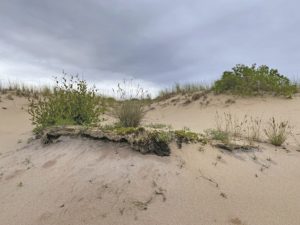
It is mineral, but without the spark of life, it is only that. Once life creeps into sand, or dirt, or clay, it becomes a connected support structure. Soil is a living, breathing thing.
When you endeavor to create a garden, one of the first things you’ll need to consider is the soil. Gardeners everywhere do this. But because we live on a sandbar, unless we’re working only with native plants, we need to amend the soil to support the types of plants we want to grow. That is, while we’re still imagining our plantings, we consider the needs of the plants we will be cultivating and seek to create a soil body that will support those needs. We consider water retention, air space, nutrient holding capacity, structure, and stability. Then, we acquire dirt.
Dirt itself is not soil. Dirt is a component of the soil system, removed from its living ecosystem. It is akin to a person removed from her culture, separated from her art and music and food and the humming interaction with the environment. To become soil, dirt has to interact with its surroundings. Only then will it grow from an inert mineral body into a system. Integrating, it comes to life.
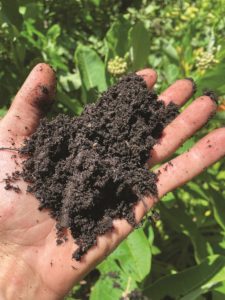
What you’re counting on when you bring dirt home is for fungi to take hold. Their mycelia spread through the soil body, forming intricate networks of cell lines, which look undeniably similar to the neural pathways of the human brain. The mycelia will befriend the root systems of plants and begin to exchange water and nutrients.
Then there are the worms. Worms feel their way through a sightless world of mineral textures and humus, eating living things, enriching them with their life energy, and depositing something richer in the tunnels they create. These tunnels become pathways for roots, conduits for air and water, allowing them to seep more freely and deeper into the earth.
Bacteria grow, too, breaking down organic matter and minerals, binding soil, gathering nitrogen.
As one component gains strength, the whole system grows in response; each individual doing its part innately, enriching the whole.
A shocking thing to grasp is the fact that there are more living organisms in a handful of soil than there are people on Earth.
Our soil is not only the foundation of our gardens, it is the foundation of all plant life. We do well to consider this when we care for our gardens. When we fertilize, we are really fertilizing the soil. When we water, we are primarily watering the soil. When we add mulch, or manure, or topsoil to our gardens, we are not adding them to the plants, we are building the soil, and the plants benefit as a result.
Only when this system is a thriving culture does it become the nourishing foundation that feeds plant life. Your garden can be only as beautiful as the soil that supports it.
